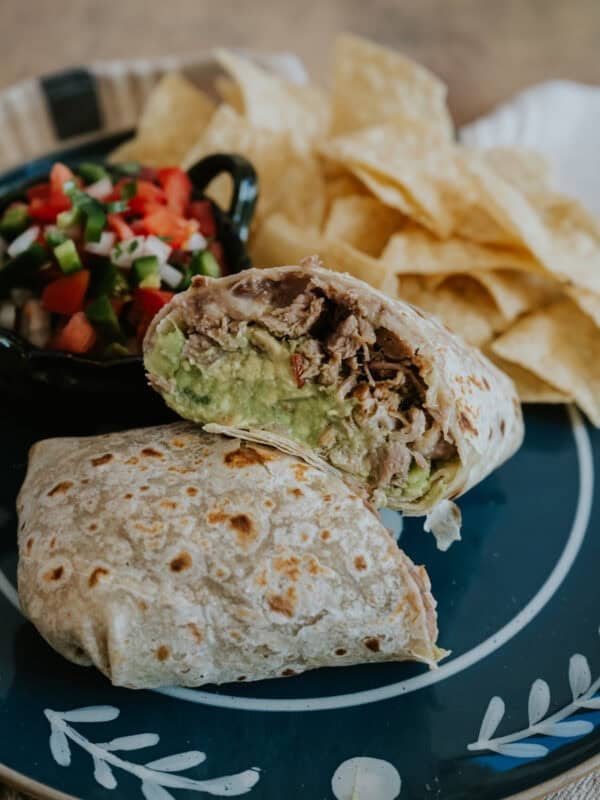What Is Piloncillo? All About Mexican Brown Sugar
10
Updated Dec 18, 2024, Published May 31, 2022
This post may contain affiliate links. Please read our disclosure policy.
Sweet, caramelly, and unrefined, Piloncillo (a.k.a. Panela) is a staple in any Mexican kitchen. Come along with me to learn all about what is often called “Mexican Brown Sugar,” from what it is, to how it’s made, and different ways to use it at home.

What is Piloncillo
Piloncillo (pronounced “pee-lawn-CEE-yoh”) is unrefined raw cane sugar that is quite popular in Mexican cuisine. The name piloncillo (literally “pylon”) refers to the conical shape it often takes, though it can also be sold in blocks or loaves.
Also known as panela (“paw-NEH-la”) or panocha (“paw-NO-cha”), this sweetener is often referred to as Mexican brown sugar because of its deep, molasses-y flavor. Unlike American brown sugar, no molasses is added to piloncillo, though it does come in both light (blanco) and dark (oscuro) varieties.
In addition, it should be noted that piloncillo blanco and piloncillo oscuro actually come from different plants! Blanco comes from green sugarcane while oscuro comes from a purple variety. When we talk about light and dark brown sugar, the only difference is how much molasses is added back to the refined white sugar.
The flavor of piloncillo is much more complex and less sweet than conventional sugar. It has hints of smoky, charred, almost rum-like undertones with a predominant flavor profile like burnt caramel. It also has a bit of an acidic finish, which I find absolutely divine.

How Piloncillo is Made?
Despite being called Mexican brown sugar, the process for making piloncillo is quite different from the brown sugar you are probably familiar with. While all sugars are cooked and refined to a degree, piloncillo is referred to as a “non-centrifugal sugar” or NCS because it is not refined after the initial reduction phase.
Basically, sugarcane is pressed to extract juice, which is then boiled down into a thick, syrupy substance. This evaporated cane juice is then poured into molds and left to harden. The result? Piloncillo! (Brown sugar, on the other hand, is made by taking centrifugally spun white sugar and adding back some of the molasses that was removed in the first place.)
Piloncillo, Panocha, and Panela: What Is The Difference?
Piloncillo, panocha, and panela are interchangeable Latin American terms for unrefined sugar cones, bricks, or blocks made exclusively from sugar cane. Exercise caution when using the word “panocha,” as in Mexican Spanish, it carries a derogatory meaning, referring to a woman’s anatomy. This unrefined sugar also goes by different names around the world: Brazilians know it as rapadura, Japanese call it kukuto, and Australians refer to it as uluru dust.
How to Break up a Piloncillo Cone
To use piloncillo, the first step will always be to break it down into smaller bits. Most often I use a serrated knife for this purpose. Scrape and chop the cone down into more manageable bits, then chop into smaller pieces as needed.
Microwave to soften: Sometimes, panela will be too hard to use a knife on. If this in the case, simply microwave the cone for 10-20 seconds at a time until it softens. From there, you should be able to proceed.
Box grater or microplane grater: You can also shave the piloncillo into very small bits using a grater. This is ideal for when you’re adding it to things like cold drinks, as it will dissolve more easily than if it were in larger pieces.

Where To Buy It
You should be able to procure cones of piloncillo at any Mexican or Latin American market. You might also be able to find it (or a similar substitute like jaggery) at international grocery stores. Depending on where you live, though, it might be easier to purchase piloncillo online. It can sometimes be purchased in ground form.
How To Store It
So long as you keep it well wrapped in a cool, dark, and dry environment, piloncillo will last much longer than most pantry sugars. I recommend using it within a year of purchasing as there will be some degradation of flavor compounds over time, but when it comes down to it, you can keep it on the shelf basically indefinitely.
Frequently Asked Questions
The closest approximation of piloncillo comes in the form of Indian jaggery (a.k.a. gur), but common American pantry items can also fill in the gap. For each cup of piloncillo, swap in 1 cup of dark brown sugar.
Absolutely! I definitely recommend trying it in place of normal brown sugar in your baking or cooking recipes. You can also use it in place of granulated sugar if you want, but note that it will give your end product a darker tone and a less sweet flavor overall.
As a non-centrifugal sugar, the naturally occurring molasses is left intact during the production of piloncillo. As a result, the minerals and nutrients (e.g. potassium and calcium) from the molasses are still present, unlike in other refined sugars. It also has a slightly lower glycemic index (64 compared to granulated sugar’s 68).
But despite piloncillo having a slightly “healthier” nutritional profile, it is still a sugar at its core. So, remember that it should be eaten in moderation!

Recipes That Use Piloncillo
Do you still have questions about piloncillo? Or did I miss something you think is important? Let me know in the comments below!













Word of advice. Never ever use the term “panocha” instead of piloncillo. In Mexico “panocha” is actually a term to describe a female body part. Anyone who is actually from Mexico would know this. So if you decide to walk into a Mexican grocery store and ask for panocha expect some smiles, laughter, or very odd looks. You’ve been warned.
Where can I purchase “authentic
Piloncillo cone sugar in U.S.A.?
And other foods like masa harina
Flour that has no toxic at sprays
And is non gmo… Possibly cooking pots, pans, etc.
Live in Central ,Missouri…
Thank you, Kevin
Blessings
So, if the label on the piloncillo in the store lists granulated sugar, refiner’s syrup, water, and corn syrup, that would just be a fancy expensive lump of refined brown sugar, right?
Do you have a recipe for Cocol Pan made with Piloncillo? I was just in Mexico and the sweet breads were amazing.
New to use of this sugar.
Thank you so much for posting this, I started using it when you mentioned it in one of your many yummy recipes.
Now it is my favorite sweetener. I just added some to my spaghetti sauce last night! Your description of how it tastes is spot on. Keep up the good work!
I, too, have had this concern. It is readily available in my area and I would like to try it. I’m looking forward to your reply
I have a question. I see piloncillo sold in grocery stores and it has no covering on it, just the cone of it. Doesnt that expose it to all kinds of germs and bacteria or God forbid, a possibility of something else more sinister or degrading? Why isnt it sold in a sealed wrapper? Your answer is much anticipated, please. Ive looked at it so many times at the store, but due to that fact of it not being in a sealed wrapper, Ive usually just passed it by. Thanks for your answer!
Hi Mari! That’s odd. I always see it in a vacuumed sealed clear wrapping. If you are concerned I’d highly recommend purchasing it online on Amazon. I share a link in my blog post.
Tambien se usa en galletas y nogda .( dulce de nuez )